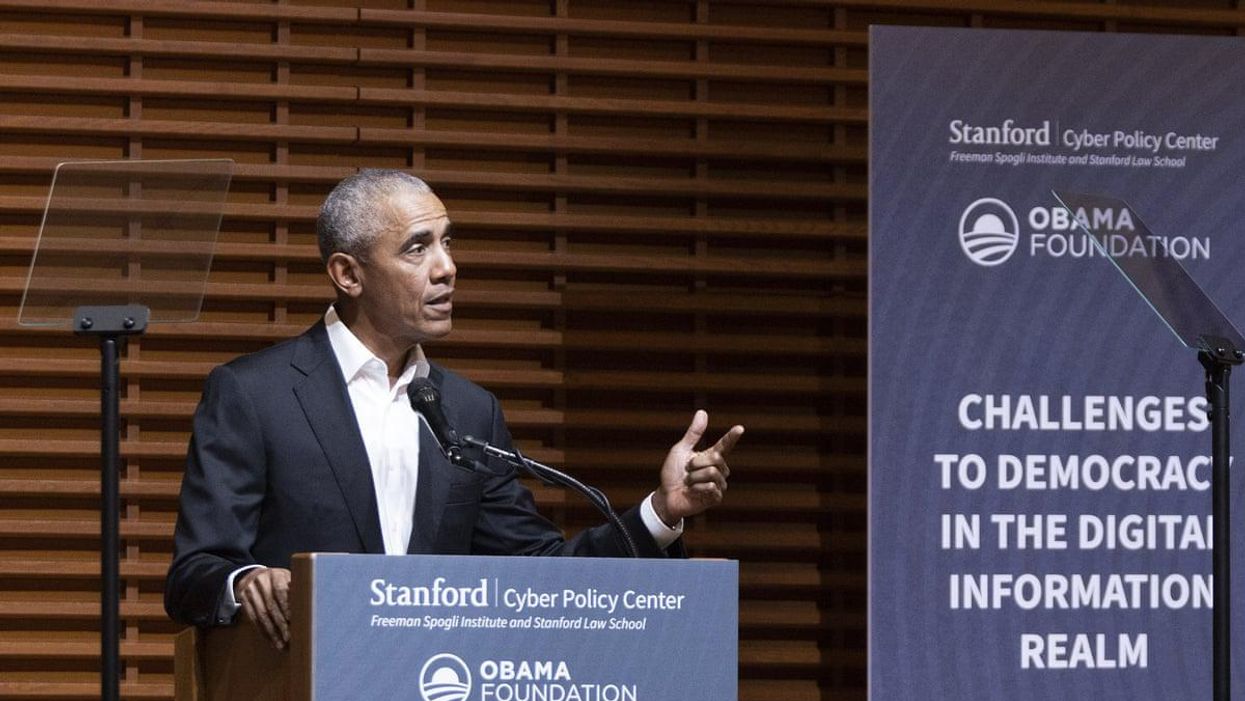Mike Lee Ripped For Spreading Lie About Biden 'Medical Emergency'
On Friday, Sen. Mike Lee (R-UT) amplified a baseless, debunked claim that President Joe Biden was experiencing a medical episode on board Air Force One. Now, the senator is getting roasted for his tweet by both journalists and commentators.
At 7:41 PM Eastern Time Saturday, far-right activist Laura Loomer tweeted: "Joe Biden is reportedly having a medical emergency on Air Force One right now" and that "press access has been removed." However, this was quickly debunked by X/Twitter's Community Notes function, which read that Biden "did NOT have a medical emergency on Air Force One following the Wisconsin rally and was perfectly fine throughout...and exited on his own after touching down in Delaware."
In response, Lee tweeted: "If Biden is having a medical emergency at this moment — on board Air Force One or otherwise — that raises ... a lot of questions." That tweet, which was posted at 8:09 PM Eastern Time last night, is still currently up on his official account.
White House pool reporter Sophie Hills of the Christian Science Monitorshed additional light on the president's health at the time of Loomer's initial tweet, writing that he stepped off of Air Force One at 7:34 PM and left with his motorcade afterward, before stopping at his home in Wilmington, Delaware at 7:50. This means Biden was already at home roughly 20 minutes before Lee sent his tweetl
Former Trump administration official Monica Crowley also tweeted Loomer's lie, only to backtrack and later tweet that there were "conflicting reports about Biden on AF1 but appears to be untrue."
Lee's amplification of Loomer's fictitious "medical emergency" resulted in harsh pushback on social media. Civil rights lawyer Leslie Proll called the Utah Republican's tweet "unconscionable." Biden campaign advisor James Singer accused him of "s—posting lies." And Joe Perticone – a contributor to never-Trump conservative website the Bulwark, noted the absurdity of a sitting U.S. senator relying on disinformation artists for news.
"The most concerning thing about a US senator’s judgment and intelligence is that he believes he’d first be hearing something as important as this from… Monica Crowley and Laura Loomer," Perticone wrote.
Former WGN reporter Jennifer Schulze also sharply criticized Lee and urged news outlets to "take a moment to cover this story about a sitting US Senator spreading malicious lies about the President."
"I know it's business as usual for republicans but it's still newsworthy," she tweeted.
Journalist Jamie Dupree noted the time difference between Lee's tweet and the time in the pool report when Biden was picked up by the presidential motorcade and driven home.
"Sen. Mike Lee R-UT tweeting out baseless medical rumors about Biden tonight. In fact, Biden was already back home (lid at 7:56 pm) by the time Lee was pressing the send button," Dupree posted.
Reprinted with permission from Alternet.












